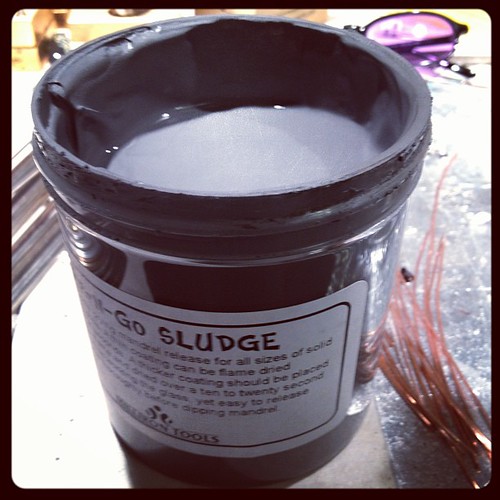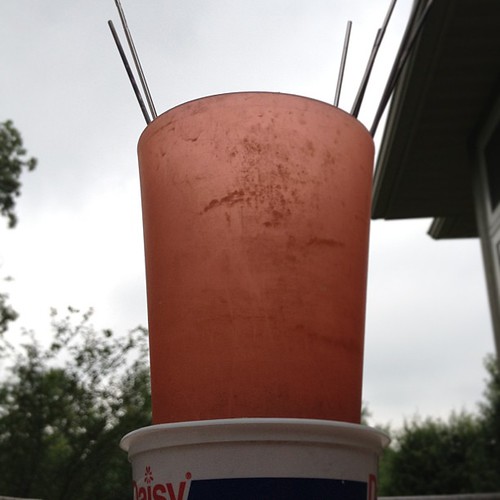Have you ever bought lampwork beads at a local craft shop like Michaels or Joann's and wondered why they have white stuff in the holes that flakes and falls out?
In order to make glass beads, a lampworker winds the glass onto a stainless steel rod (mandrel). However, before they get to that step, they must dip the mandrel in bead release. Otherwise the glass will be permanently fused to the mandrel.
There are many types of bead release. The one I'm currently using is called Dip N Go Sludge.
What I like about this particular type of bead release is that it's strong and I can flame dry the release on the mandrel rather than having to let it sit to air dry. I often forget to dip them in advance.
There are various techniques for dipping mandrels to get a thick or thin coating, but the real goal is for the release to be smooth. The consistency of the release should be about pancake batter, maybe a bit thicker. I often have to add water to thin it out as it gets thicker over time.
After the beads have annealed in the kiln and cooled to room temperature, the first thing is to soak the beaded mandrels in water. Why? For a couple reasons.
#1: once the bead release has been exposed to the flame, then baked in the kiln, it can be like trying to remove concrete. The water helps to loosen it up a bit into something closer to caked on baked on mud.
#2: airborne particles of bead release dust are probably not the best thing for the respiratory system. The water keeps the amount of airborne particles down to a minimum.
Once the beaded mandrels have soaked in water for a bit, it's time to remove the beads from the mandrels. Keeping in mind that bead release is REALLY REALLY bad for the home pipes, I use paper towels to get the majority of the bead release off before the beads are even removed from the mandrel. Any extra is dumped with the water outside.
However, sometimes pliers aren't enough. Other options include putting the beaded mandrel in the freezer for 5-10 minutes. A second option involves using a riveter by threading the mandrel through the riveter until the nose rests against the bead then gently squeezing the handles.
I often leave my beads languishing in water for a long long time because I hate the next step...cleaning the bead release out of the bead holes. To do this, I use a small sour cream container filled with water, a Dremel Minimite cordless rotary tool
and diamond drill bits.
Selling lampwork beads that still have the bead release in the holes is not cool at all, and if you buy them at local craft shops, you will get beads with bead release still caked to the inside.
Have a great holiday week and see you soon!
-Jen Cameron










Fun to see that process from the outside--and glad that I don't see the bead release inside my beads!
ReplyDeleteI have always wondered about this process, now I know!! Thank you!
ReplyDeleteFascinating! Thanks for sharing!
ReplyDeleteI had no idea that the bead release was bad for the pipes. Thanks for that bit of info.
ReplyDeleteI didn't know bead release was bad for pipes either... I'm going to have to change what I do! Thanks for the post, too, explaining why it's always better to buy from a reputable bead maker. You get what you pay for in this case.
ReplyDelete